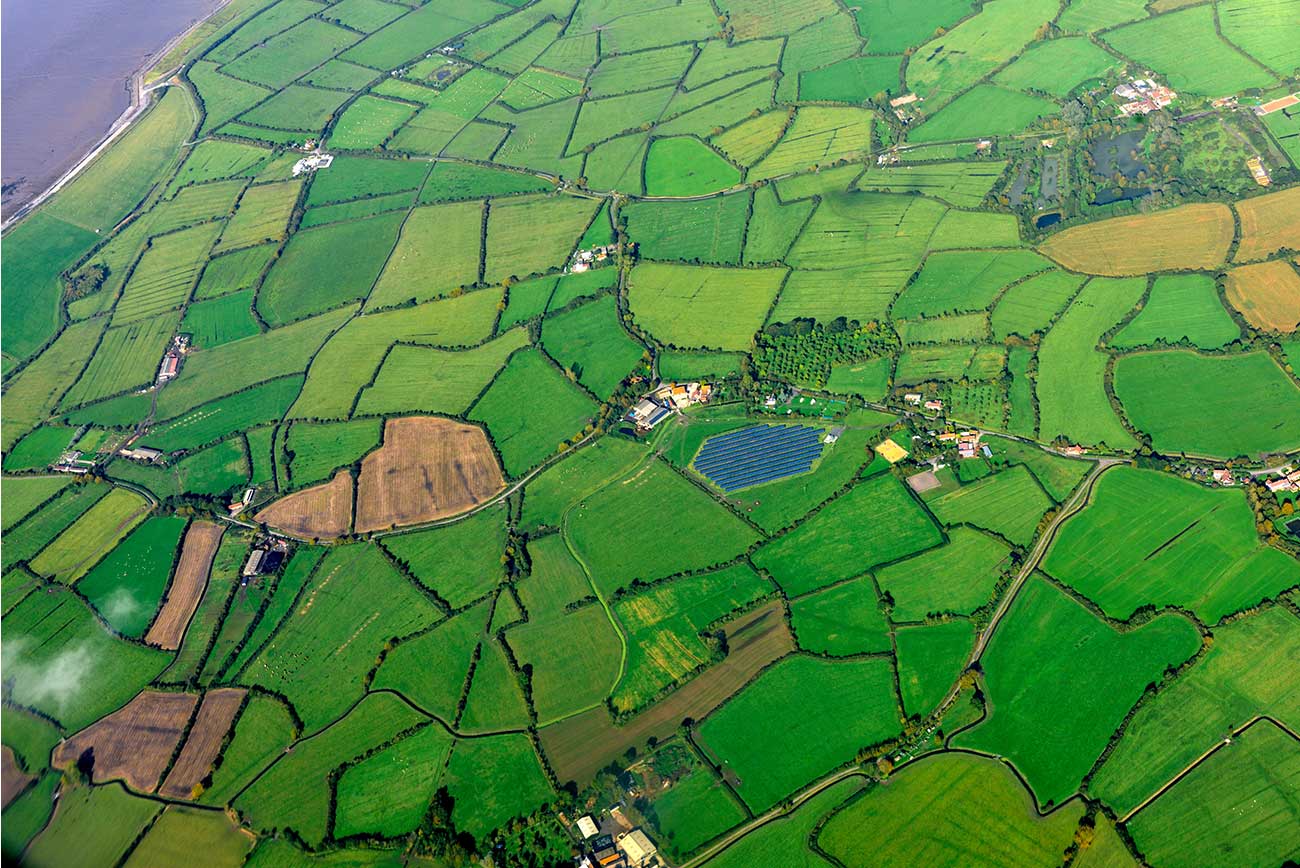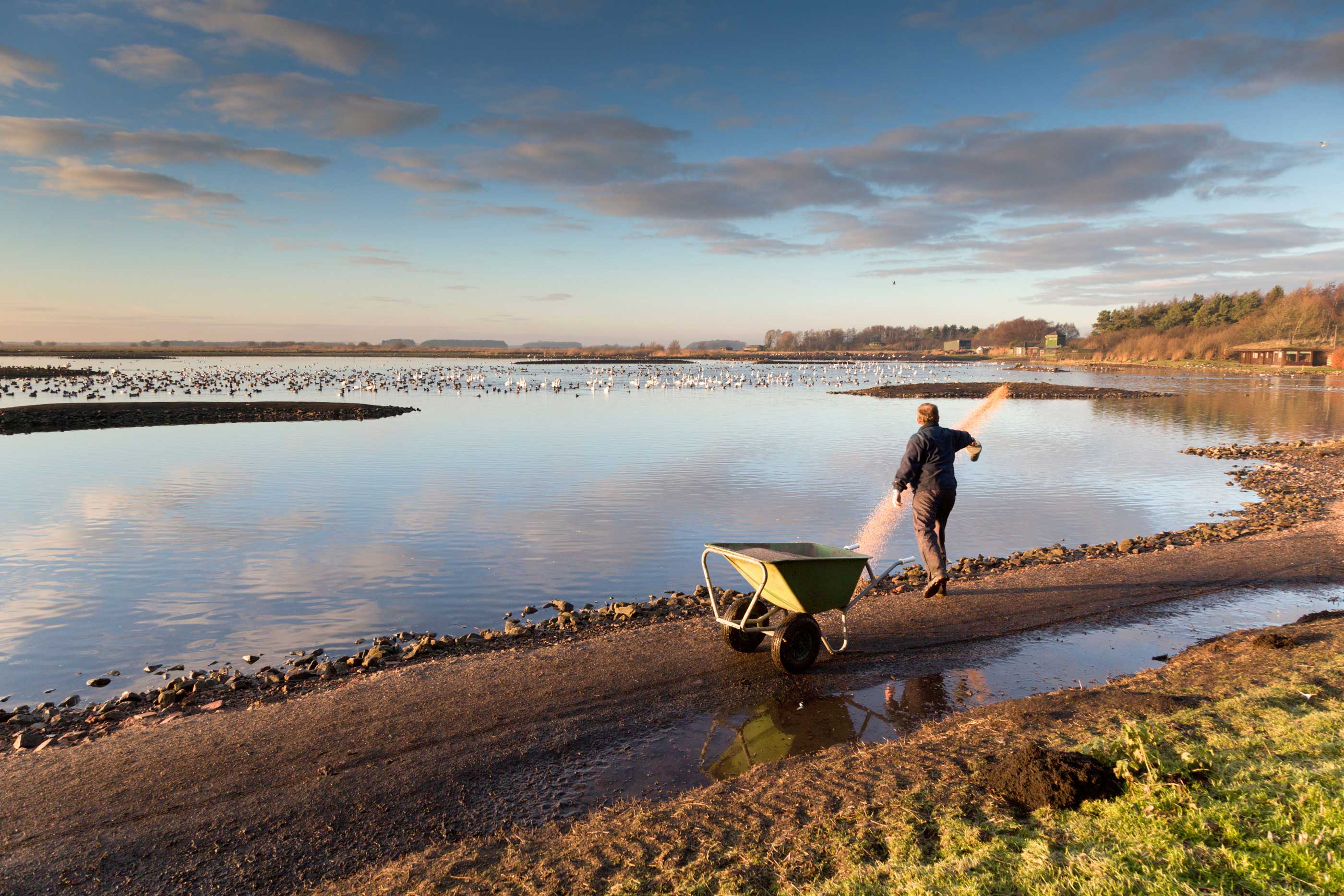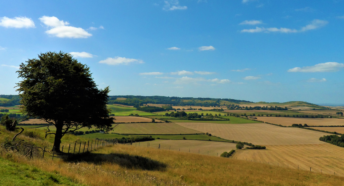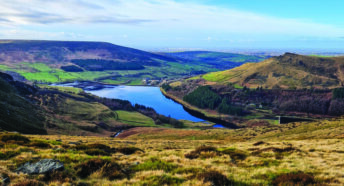Ten ways that you and your local community can make a difference to climate change
Hearing about climate change can feel daunting – but we have some ideas for small actions that countryside communities can take that can add up to a big difference.
2022 has been a bad year for our climate: Conigsby, Lincolnshire recorded the hottest temperature ever in an unprecedented heatwave; drought stress caused trees to lose their leaves early in a ‘false autumn’; and the UN is yet to find a credible pathway to maintaining a 1.5 degree temperature increase.
When we hear bad news about the climate emergency, it’s easy to feel overwhelmed and, well, a little despondent. But we know change is possible – and that small individual actions add up to make a real difference.
At CPRE, we spend a lot of time talking to the government, and campaigning alongside the public, for bigger system changes that can be made through government laws, policy or funding. But that doesn’t mean that we don’t sweat the small stuff!
To make a difference to the climate crisis, it’ll need both those bigger changes and for all of us to do our bit too. And, as the countryside stands to be badly affected by climate change, we thought we’d share ways that countryside dwellers can activate their communities and make some adjustments that can really make a difference.
1. Eat your garden
Supermarket food can be seriously bad for both wildlife and the climate. The artificial fertilisers, pesticides and other sprays used on our fruit and veg, as well as on the feed for the livestock that ends up on our plates, are responsible for a lot of harmful greenhouse gases.
A huge amount of our food also comes from abroad, and just getting it on our shelves produces a lot of carbon emissions.
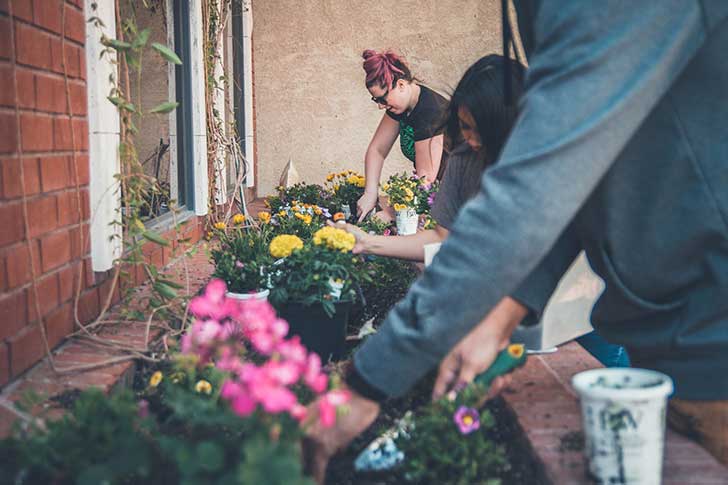
So if you want to eat well, help nature and help tackle climate change, and are lucky enough to have a garden, shared green space – or a space your community could turn into an allotment – why not try growing some veg of your own, or get together with neighbours to see if you can arrange a scheme with a local farmer. Check out the Social Farms and Gardens website and see if you spot a project near you – or try and get one of your own started!
2. Make friends with a farmer
If you can’t grow your own, then check out or set up community veg box schemes with a local farm.
They can give you delicious seasonal food, dramatically reducing the impact of your diet, and if they’re farmed sustainably like this chemical-free cooperative farm just outside Norwich, they’ll be doing an even better job of helping the soil suck carbon out of the atmosphere.
View this post on Instagram
Getting your five a day never tasted so good…
3. Ditch the car for a bus, bike or simple saunter – and share trips
Cars are climate killers. Even electric vehicles release large amounts of greenhouse gases when they’re built. But we might find that many of the trips we make in our day-to-day lives can be made car-free.
If you’re lucky enough to have a bus service near you, taking that instead could dramatically cut your carbon footprint – and remind bus service providers that we want and need these services. If you’re able, cycling or walking can be even healthier, cheaper and kinder to the climate. Take inspiration from this mass school run by bike that’s kicked off in Barcelona!
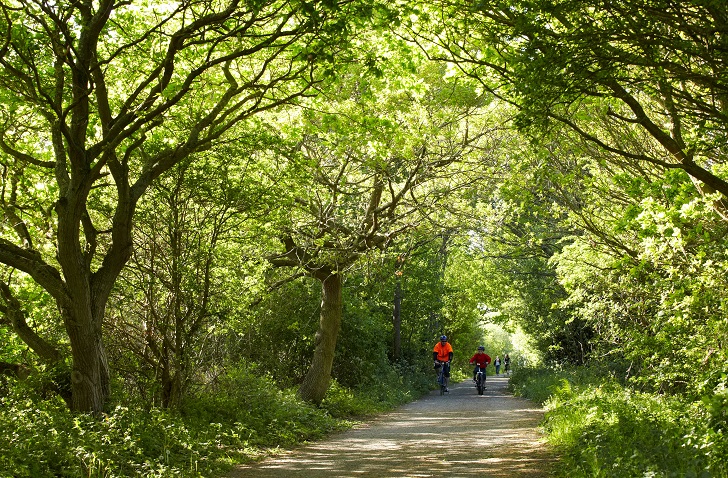
In rural communities, we know it’s sometimes tough to avoid using a car. If that’s the case, try setting up a community car share scheme (as explained in this article from Sustrans) to car-pool for common journeys like the school run and daily commutes. Sharing lifts with your neighbours can really reduce the number of cars on your roads, making them greener and safer. Win-win!
4. Harness the power of your local landscape
We all know that we’re going to need a lot more renewable energy in the future to replace the energy we currently get from oil, coal and natural gas. But your community doesn’t have to wait for a developer to come up with a plan for your local area.
Across the country, hundreds of communities have set up their own locally-owned energy schemes making use of village hall roofs, windy hills and old weirs to generate low carbon from their landscape.
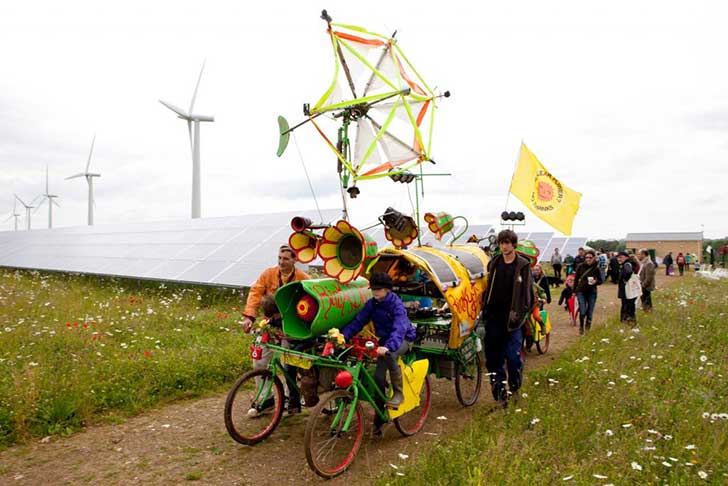
Community energy schemes give you and your neighbours the power to have a say not only in where and how new renewables are designed in your area, but also in how the money they make is spent.
You can find out more about CPRE Community Energy Visioning here, and visit our friends at Community Energy England to find out more about setting up a scheme in your area.
5. Drop your shop: reduce, reuse, recycle, rent!
Ever felt like you have too much stuff? Well, maybe we do…
It’s likely that the manufacture of almost anything we buy from shopping centres, from new clothes to laptops and most things in between, produce more of the greenhouse gases choking our atmosphere.
We all need something new from time to time, but reusing household items as long as we can and repairing them, or buying things second-hand instead of brand new, can make a hefty cut to your carbon footprint. Freecycle is always worth a look: it’s a non-profit online space where people can give and get all kinds of second-hand stuff – for free.
Check out local rental schemes such as London’s Library of Things for hiring objects you won’t need forever – and if you don’t have a rental option nearby, why not set one up with your local school, library, village shop or community hall?
Or, if you’re planning local events such as parties, consider binning single-use plastics and wasted non-recyclables and hire the items you need from a sustainable party pack provider or become one yourself.
So next time you find yourself tempted to go shopping, ask yourself whether there’s a greener way to get hold of what you need (and if you definitely need it..). And if it’s a must-have, do some research about what the seller is doing to help climate change by dropping them a line or using comparison sites such as Good on You.
6. Keep hedgerows heroic
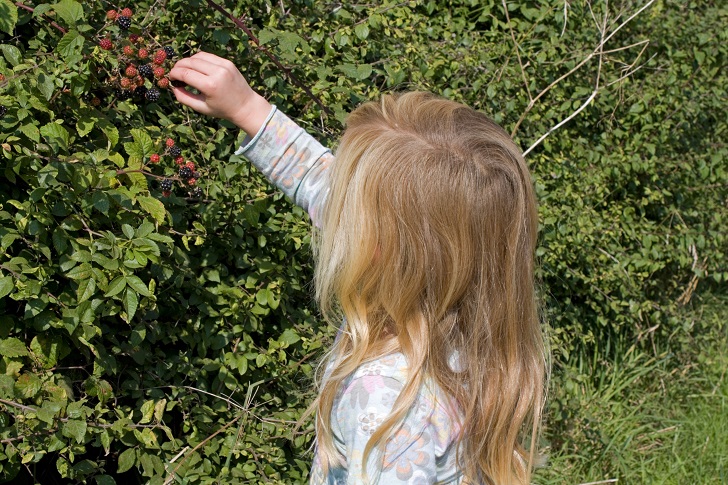
The countryside is one of the great weapons we have in our fight against the climate emergency. Trees, hedges, and the soil all suck huge amounts of carbon out of the atmosphere, helping to reduce the impact of our lifestyles as well as providing a habitat for all sorts of wildlife.
Unfortunately, for many decades we’ve been losing the parts of our landscapes, such as hedgerows and peat bogs, that are some of the best for absorbing carbon.
At CPRE, we’ve campaigned for the government to increase the amount of hedgerows by 40% in the next three decades. This could play a big part in reducing our overall carbon footprint, because hedgerows are heroic for absorbing carbon.
Every community can play its part by working with local farmers to help them restore and replant the hedgerows that once stitched the patchwork of our landscape together. So if you have a hedgerow on your property or nearby, keep an eye on how it’s growing and make sure it thrives. Our rough guide around the hedges tells you how.
7. Make travel great again
Flying on a plane is about the most carbon-intensive way to get from one country to another, but that doesn’t mean we all need to stop going on holiday abroad. Instead, look out for long-distance trains that can get you across Europe – and beyond.
It might take a bit longer but it’s much better for the environment, with domestic flights releasing up to three times as much carbon as trains for each passenger. It’s a great way to meet new people and experience so much more of the world as you travel.
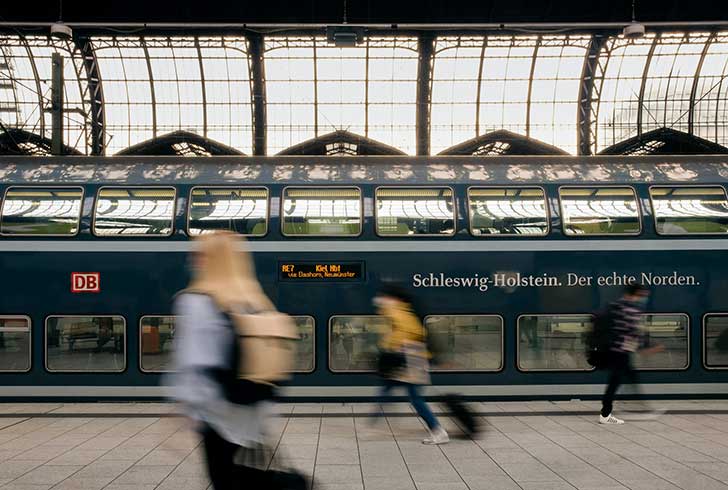
This is a fun way to do your bit – to make the journey part of the holiday once again!
8. Wrap your homes up warm
Heating our homes is currently one of the largest sources of emissions in the UK, especially because so many of us have gas boilers. 40% of all UK emissions come from domestic households, and heating is very often a large chunk of that.
Installing new insulation for your home and stopping heat from leaking away can help keep your bills down as well as cut your carbon emissions.
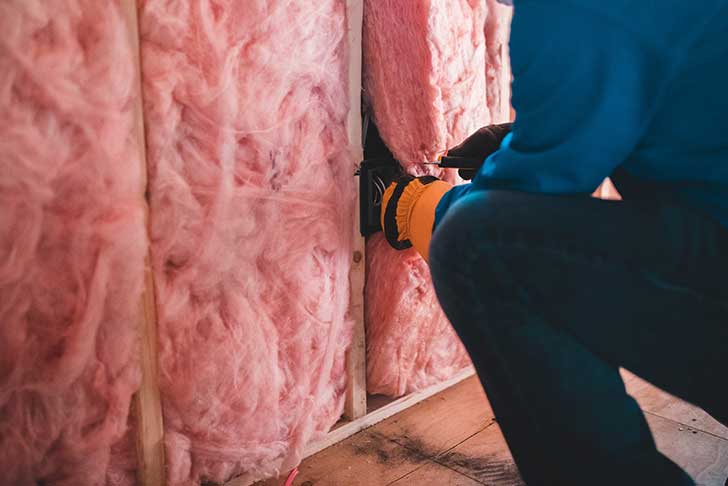
The government has schemes to help people pay for home insulation, and many communities are doing great work running education campaigns and offering funding pots to help local residents to keep their homes and shared buildings warm without having the heating on all day.
9. Join CPRE
Well, we would say this, of course, but if you want to team up with others and be part of the movement to save our planet and our countryside, join us at CPRE!
We’ve published a vision for the future calling on the government to go greener, better, faster, and laying out how CPRE is involved in tackling the climate emergency. Explore our wider work on climate change and renewables here.
We work in every English region to help really focus on the climate challenges your corner of the country is facing and give targeted localised support. Joining us as a member, from as little as £5 per month, means that you’re connected to your local community and can make a real difference – and you’re supporting our national campaigning to the government too.
10. Vote, vote, vote
Ultimately, we can make a difference at an individual and local level – but to get us further along, faster, we’ll need to see changes to tackle the climate emergency as a country and as a society.
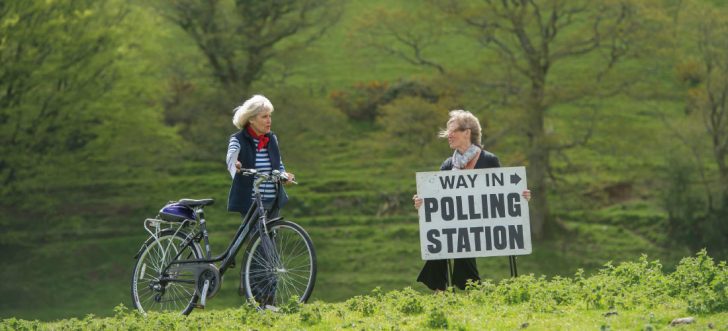
Putting an ‘X’ in a box when you vote might feel small or insignificant, and it could be easy to think it doesn’t make a difference. But making your voice heard in choosing the people that you believe will take the most decisive action on the issues that you care about – including climate change – is one of the best ways to make a change.
This is the case even more in local elections, where the candidates will know your area and share your passion for it!
So, when the time comes around to pop over to the polling station (or to vote by post – anyone can do this and it’s dead easy!), don’t pass up the chance to play a part in choosing the people that you want to see make big decisions about how money is spent and what rules are laid out.
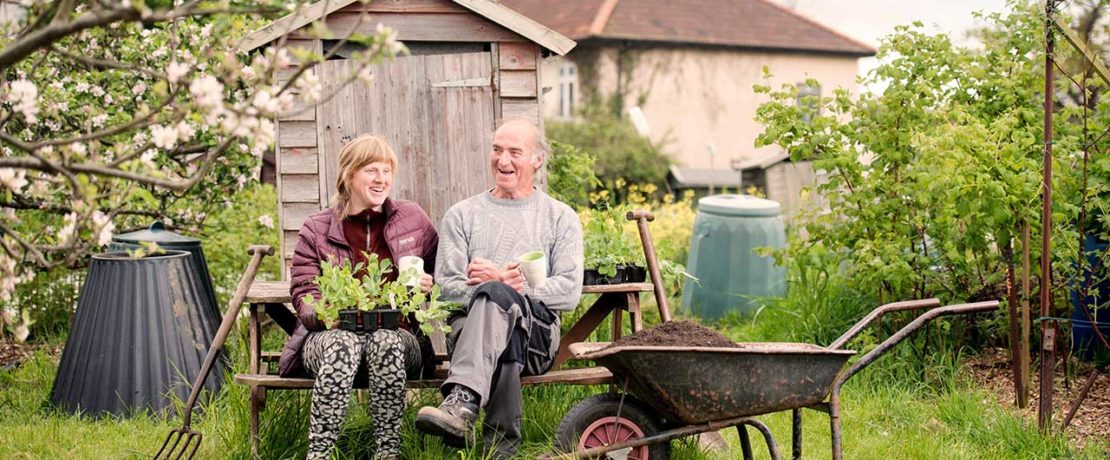




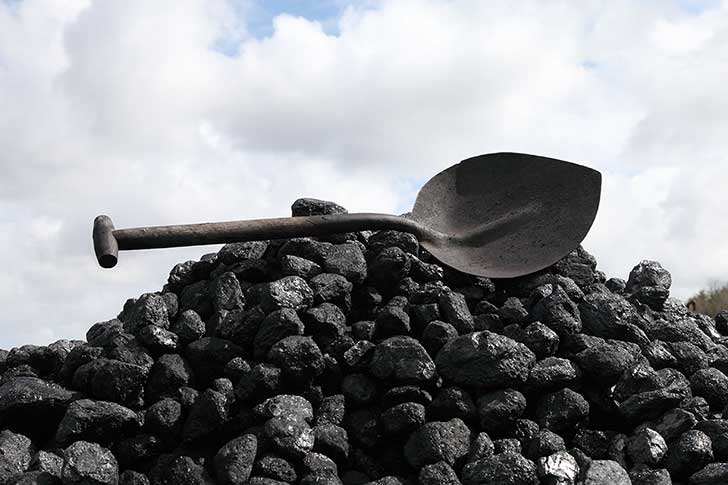
 6 min read
6 min read 